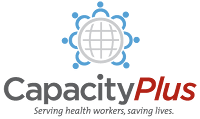Palliative Care
New Technology and Illness Self-Management: Potential Relevance for Resource-Poor Populations in Asia
The aim here is to explore the extent to which further investment in technology could play a role in the development of an effective and affordable health sector strategy for at least some developing economies. It is suggested that the effectiveness of the approach may be highly dependent on the specific health conditions addressed, the nature of existing health systems and the overall socio-economic and cultural context. [from abstract]
- 475 reads
Palliative Care in Enugu, Nigeria: Challenges to a New Practice
The aim of this article is to present a view of the challenges encountered by us as we established the Pain and Palliative Care Unit of our hospital and to give suggestions and recommendations to leaders and policymakers in emerging and developing economies around the world on how best to encourage and promote the field of palliative care. [from introduction]
- 584 reads
Pain Control in the African Context: the Ugandan Introduction of Affordable Morphine to Relieve Suffering at the End of Life
This paper offers an example of a highly effective and cost efficient model of care that has transformed the ability to humanely manage the problems of those with terminal illness, and to offer a culturally appropriate “good death”. [from abstract]
- 479 reads
'My Dreams Are Shuttered Down And It Hurts Lots’ – A Qualitative Study of Palliative Care Needs and Their Management by HIV Outpatient Services in Kenya and Uganda
Despite the huge burden of HIV in sub-Saharan Africa, there is little evidence of the multidimensional needs of patients with HIV infection to inform the person-centred care across physical, psychological, social and spiritual domains stipulated in policy guidance. We aimed to describe the problems experienced by people with HIV in Kenya and Uganda and the management of these problems by HIV outpatient services. [from abstract]
- 582 reads
Planning Training Seminars in Palliative Care: a Cross-Sectional Suvey on the Preferences of General Practioners and Nurses in Austria
Against the background of the development of palliative care in Austria the authors undertook this survey to identify the preferences of the general pracitioners’ and nurses’ regarding the specific design of training seminars in palliative care. We wanted to gain a better insight into which educational topics, timeframe, location and group designs are likely to attract a majority of different professional groups. [from author]
- 1746 reads
Community Health Approach to Palliative Care for HIV/AIDS and Cancer Patients in Sub-Saharan Africa
Given the very limited health infrastructure and resources and the need to provide a palliative care service to about one percent of the population each year, community and home-based care is viewed as the key to responding to these needs. Some countries have already developed strong home-based care networks in coordination with the PHC system to respond to the HIV/AIDS epidemic. Palliative care, as part of the continuum of care of HIV/AIDS, cancer and other chronic conditions can be integrated into this existing network. [author’s description]
- 4484 reads
Uganda: Delivering Analgesia in Rural Africa: Opioid Availability and Nurse Prescribing
Hospice Africa Uganda introduced palliative medicine to Uganda in 1993 with enough funds to support a team of three clinicians for three months. Training in the medical and nursing schools was introduced in 1994. Since then, Uganda has achieved the three essential components of an effective public health strategy. It has also been the first country to have palliative care described as an essential clinical service and to change the law to allow nurses and clinical officers who complete special training in palliative medicine at Hospice Uganda to prescribe morphine. Palliative care is spreading throughout the districts of Uganda, ensuring that morphine will be available to everyone who needs it. [adapted from publisher’s description]
- 2520 reads
Integrated Community-Based Home Care (ICHC) in South Africa
This report outlines information from a literature review and field research pertaining to the key differences and similarities between the hospice ICHC model and other home-based care models used in South Africa; reviews the core elements of the ICHC model; and highlights best practices of the model. [adapted from introduction]
- 5243 reads
Integrating Pediatric Palliative Care into Home-Based Care: an Evaluation of 3 Home-Based Care Projects
In order to identify potentially effective models of home-based care (HBC) within which paediatric palliative care could be integrated, and to identify critical aspects requiring strengthening, the NMCF commissioned an in-depth evaluation of three NGOs that have been supported through the Goelama Program. The objectives of the evaluation were: to evaluate the current capacity of the three HBC projects to provide paediatric palliative care as a component of overall HBC - this focused on the overall management of the projects, as well as the competencies of carers to provide both general HBC and palliative care to children; To explore the possibilities for strengthening the provision of paediatric palliative care as an integrated component of HBC; and to explore the role of home-based carers and HBC projects in the provision of ART to children. [author’s description]
- 18467 reads
Clinical Guide on Supportive and Palliative Care for People with HIV/AIDS
Chapter 19 of this report discusses “Palliative Care in Resource-Poor Settings.”
Palliative care is crucial in every care setting, rich or poor, for it is a philosophy of care that centers on improving quality of life for patients and their families. In this chapter, we focus attention on the need to integrate palliative care into national government strategies in order to address the pandemic in resource-poor settings, which includes many developing countries and low-income areas in some industrialized countries. [author’s description]
- 2607 reads
Current HIV/AIDS End-of-Life Care in Sub-Saharan Africa: a Survey of Models, Services, Challenges and Priorities
In response to increased global public health funding initiatives to HIV/AIDS care in Africa, this study aimed to describe practice models, strategies and challenges to delivering end-of-life care in sub-Saharan Africa. A survey end-of-life care programs was conducted, addressing the domains of service aims and configuration, barriers to pain control, governmental endorsement and strategies, funding, monitoring and evaluation, and research. Both closed and qualitative responses were sought. [author’s description]
- 2415 reads
Palliative Care in Sub-Saharan Africa: an Appraisal
Palliative care aims to maximise quality of life and relieve the suffering of patients with life-limiting incurable disease, and to support their families and carers. It is provided through specialist services such as hospices and palliative care teams and in general settings. The HIV/AIDS pandemic and rising cancer rates in Africa have increased the need for well-developed and integrated palliative care services. In sub-Saharan Africa, the concept of palliative care is not well developed and palliative care is largely confined to isolated specialist centres. Services have developed, but in very varied ways. In order to inform future developments, this review aimed to identify and appraise activities, opportunities and evidence of the status of palliative care in Africa.
- 3260 reads
Integrated Management of Adolescent and Adult Illness: Interim Guidelines for First-Level Facility Health Workers
The WHO IMAI guidelines support the rapid expansion of access to ART by supporting the shifts of key tasks to multi-purpose health workers at first-level facilities located in the community (health centres and clinics). By preparing nurses and clinical aids to provide acute care to adults, many opportunistic infections can be treated and the patient stabilized for ARV treatment without referral to district clinic. Management of patients near their home is important for equity and to achieve high levels of ARV adherence. [adapted from publisher’s description]
- 4328 reads




